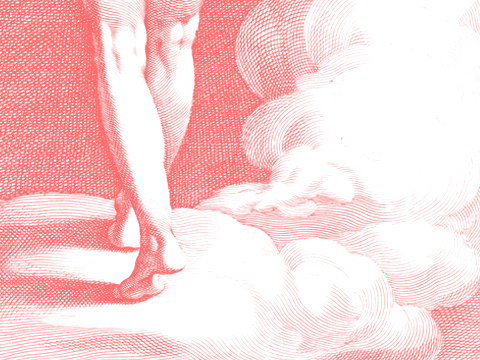
One small step for technology is one giant leap for art. Building an artistic future in a digital world.
Mostly we associate art with “oil on canvas” like Stańczyk hanging in The National Museum in Warsaw or “Profile of time” by Salvador Dalí, which once upon a time was standing in front of Wrocław Sky Tower. However, along with the development of the technological world, art also found its place in the virtual space. What does contemporary art look like in the era of digitization, and what will its future hold?
The development of classical art can be identified with Andy Warhol, who was the first to make a breakthrough in this matter. The artist, using the screen printing method in the process of creating his most popular portrait of Marilyn Monroe, introduced a machine, which did much of the work, into the hermetic relationship between the artist and his work. This provided evidence that the idea behind the composition was the most important thing, rather than the technical process.1
Another transformation that took place in the art world dates back to the second half of the 20th century. In search of new forms and possibilities for their work, artists turned to non-standard tools. They noticed the potential of new media such as television, the Internet, or video, which made it possible to combine many fields and “enliven” the, so far, static work of art.2
It’s hard to talk about progress in this field without mentioning the artist Nam June Paik, a Korean-American artist considered a pioneer of the art known as “video art”. Nam’s interests were focused on progressive music techniques, which he studied and practiced at the same time. While attending a course in Darmstadt he got in touch with outstanding composers – Karlheinz Stockhausen, John Cage and George Maciunas.3
The meeting of Cage was an inspiration for the artist to create a new type of music – interactive art. His experiment at the beginning involved distorting radio waves and causing disturbances in the background of the receiver with accompanying sound effects. He dedicated his new piece to Cage, who described Paik not just as a composer but rather as an “extraordinary performer.” Paik’s first exhibition at the Parnass Gallery in Wuppertal in 1963 provided him with career advancement and fame as an artist who used television as an instrument.4

Currently, the transformations taking place in the art world are happening right before our eyes. More and more works of art are moving into digital space, where it’s not only possible to contemplate them, but also to become a real artist. An example of contemporary artists, who perfectly find themselves in technological reality, are computer graphic designers, whose work results in virtual works. Current possibilities make them more than unique. They reach the level of allowing to create almost perfect virtual reality, which is hard to distinguish from the real world.
Being a graphic designer is not just a profession. For many people, it has become a passion and an opportunity to express themselves through art. Each work is individual and exclusive in its own way, and graphic designers are constantly outdoing themselves in their artistic visions and creativity.
Today, digital design is not just limited to clients’ IT needs. They increasingly require a unique and one-of-a-kind concept that stands out from the rest. A true “work of art” that visually expresses the nature of their business uniquely.5
Jefferson Han mentions that the turning point of digital art came not when the question “How do we make pixels pretty?” came up, but rather when we began to wonder, “How do we engage the viewer more?”6

Progressive technology, development of printing and advanced processing capabilities allow us to create photorealistic works of art, which in their perception resemble a contemporary painting. Nowadays, graphic artists use vector graphics, scans, or generic forms such as fractals or algorithmic art, which gave rise to the term “algorithmist”.7
A step into the future for the global art market was the emergence of non-exchangeable tokens, referred to as NFT. Over the past few years, they have undoubtedly caused quite a revolution in the artistic future, creating new opportunities for artists and connoisseurs alike.
When considering how the world of art will look in the future, it’s hard to predict exactly what direction it’ll take. Just a few years ago, the ordinary Smith probably couldn’t imagine buying art in the virtual space, while nowadays the likelihood that he’ll be willing to pay tens, if not hundreds of thousands of dollars for “digital love” is much higher. Considering the pace of technological progress, we can expect surprising innovations, solutions, and going beyond not only the borders of the monitor but also the limits of our consciousness.
Perhaps futuristic art will not only be a visual experience for us, but it’ll think and feel on its own. We can already observe the first steps towards artificial intelligence, which in combination with augmented reality gives the possibility to create works beyond the reins of our imagination. Remind yourselves of the famous movie Her, in which Hollywood badass Joaquin Phoenix turns into a writer who falls head over heels in love with an artificial intelligence that begins to reciprocate his feelings. Once fiction is about to see the light of the day, and the art of the future will be not only a visual experience for as, but it’ll be thinking and feeling by itself. We can already see the first steps towards artificial intelligence, which augmented reality offers the possibility of creating works beyond the reins of our imagination.
So, will art find its place in a world dominated by new technologies and Gen Z? Undoubtedly, yes, but the form will resemble the world of The Matrix and Black Mirror more than the one we know today.
___
1 https://www.magazyn-hamag.pl/artykul/sztuka-w-czasach-nowych-technologii-1760.html
2 Ibidem.
3 http://meakultura.pl/artykul/nam-june-paik-interactive-art-2036
4 Ibidem.
5 https://www.gendek.pl/blog/grafika-komputerowa-a-sztuka/
6 https://foksal17.pl/artykul/grafika-komputerowa-w-sztuce-vademecum
7 Ibidem.
